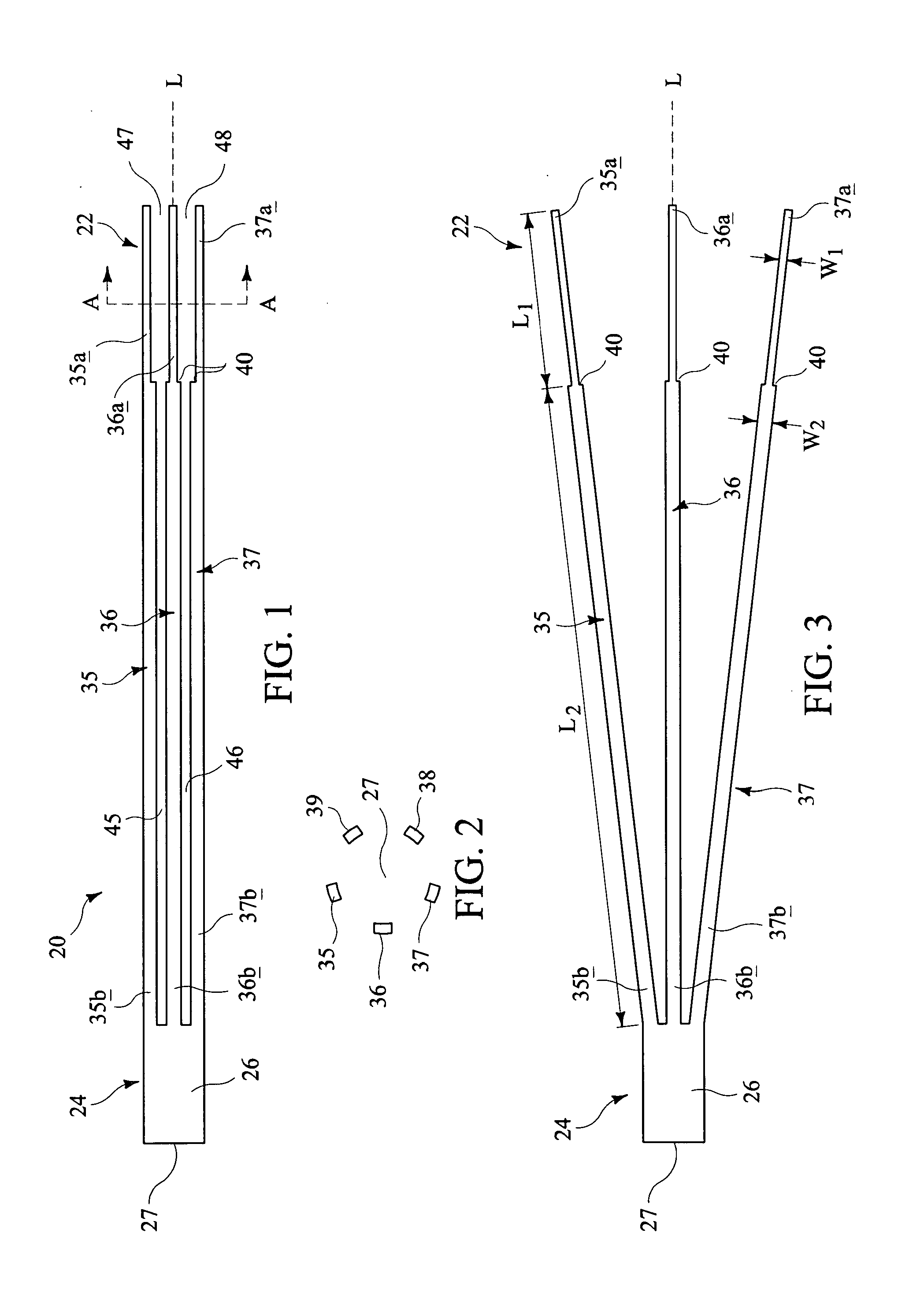Apparatus and methods for improved stent deployment
a technology of stent and stent body, applied in the field of medical devices, can solve the problems of unfavorable or difficult recapture or repositioning of stent, unfavorable stent positioning, and inability to move an undesired amount, and achieve the effect of improving the positioning of sten
- Summary
- Abstract
- Description
- Claims
- Application Information
AI Technical Summary
Benefits of technology
Problems solved by technology
Method used
Image
Examples
Embodiment Construction
In the present application, the term “proximal” refers to a direction that is generally closest to the heart during a medical procedure, while the term “distal” refers to a direction that is furthest from the heart during a medical procedure.
The preferred embodiments taught below are described in connection with the deployment of a stent or stent graft. It is to be understood that the apparatus and method can be used for deploying of a range of implantable medical devices including stents, stent grafts, vena cava filters, occlusion devices and so on.
Referring to FIGS. 1-3, an apparatus for deploying a stent, or stent-graft, is disclosed. The apparatus comprises a control member 20 having proximal and distal regions 22 and 24. The control member 20 may be formed from a cannula 26 having a lumen 27 extending between the proximal and distal regions 22 and 24. As described further below, selective actuation of the control member 20 may permit at least partial radial expansion of a stent...
PUM
 Login to View More
Login to View More Abstract
Description
Claims
Application Information
 Login to View More
Login to View More - R&D
- Intellectual Property
- Life Sciences
- Materials
- Tech Scout
- Unparalleled Data Quality
- Higher Quality Content
- 60% Fewer Hallucinations
Browse by: Latest US Patents, China's latest patents, Technical Efficacy Thesaurus, Application Domain, Technology Topic, Popular Technical Reports.
© 2025 PatSnap. All rights reserved.Legal|Privacy policy|Modern Slavery Act Transparency Statement|Sitemap|About US| Contact US: help@patsnap.com



